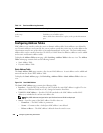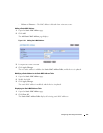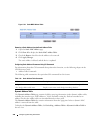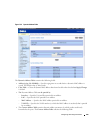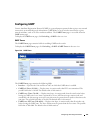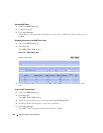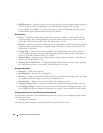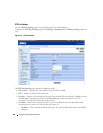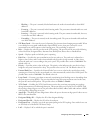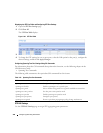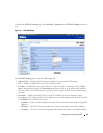
344 Configuring Switching Information
Configuring the Spanning Tree Protocol
The Spanning Tree Protocol (STP) provides a tree topology for any arrangement of bridges. STP also
provides one path between end stations on a network, eliminating loops. Spanning tree versions
supported include Classic STP, Multiple STP, and Rapid STP.
Classic STP provides a single path between end stations, avoiding and eliminating loops. For information
on configuring Classic STP, see "STP Global Settings."
Multiple Spanning Tree Protocol (MSTP) supports multiple instances of Spanning Tree to efficiently
channel VLAN traffic over different interfaces. Each instance of the Spanning Tree behaves in the
manner specified in IEEE 802.1w, Rapid Spanning Tree (RSTP), with slight modifications in the working
but not the end effect (chief among the effects, is the rapid transitioning of the port to ‘Forwarding’).
The difference between the RSTP and the traditional STP (IEEE 802.1d) is the ability to configure and
recognize full-duplex connectivity and ports which are connected to end stations, resulting in rapid
transitioning of the port to ‘Forwarding’ state and the suppression of Topology Change Notification.
These features are represented by the parameters ‘pointtopoint’ and ‘edgeport’. MSTP is compatible to
both RSTP and STP. It behaves appropriately to STP and RSTP bridges. A MSTP bridge can be
configured to behave entirely as a RSTP bridge or a STP bridge.
To display the Spanning Tree menu page, click Switching
→
Spanning Tree in the tree view. This
Spanning Tree page contains links to the following STP procedures:
•STP Global Settings
•STP Port Settings
•STP LAG Settings
• Rapid Spanning Tree
• MSTP Settings
•MSTP Interface Settings
STP Global Settings
The STP Global Settings page contains fields for enabling STP on the switch.
To display the STP Global Settings page, click Switching
→
Spanning Tree
→
Global Settings in the tree
view.



